What can you learn about fitness from someone who drags semitrucks, lifts massive stones and flips 800-pound tires for fun?
More than you might think.
“Strongman training is really the ultimate in functional training,” says Elliott Hulse, a professional strongman from St. Petersburg, Fla., where he trains everyone from strength athletes to recreational fitness buffs. “You’re pushing, pulling, lifting, dragging and throwing heavy things. Our bodies are designed for these activities, and we’re healthier and more vital when we do them.”
Fellow strongman coach and former competitor Steve Pulcinella, USAW, owner of Iron Sport Gym in Glenolden, Pa., concurs: “When you exert maximum strength for one to two minutes straight — like you do in competition — it’s like running an all-out quarter-mile: great for building strength, power and endurance at the same time.”
In other words, strongman-style training is an old-school version of the all-in-one workouts most cutting-edge fitness experts believe all of us should be doing. It’s just a little more novel, a little more intense and, well, a little more fun.
Although it’s generally called “strongman” training (named after the mustachioed stage performers who lifted, smashed and balanced odd-shaped heavy things onstage beginning in the 1800s), many women find this type of workout makes them firmer and more sculpted than the workouts they’re accustomed to. (And fear not: Whether you’re male or female, strongman training won’t give you the round belly and gigantic neck of a strongman competitor unless you’re also eating like one!)
Hulse and Pulcinella have created the following modified strongperson workout you can do using equipment available at your local health club. During some exercises, you’ll use that equipment in unusual ways, but that’s part of what makes this “old-meets-new” workout fun: It’s anything but the same old thing.
The Workout
Spend five minutes doing a dynamic warm-up, making sure to mobilize your major joints, with an emphasis on the hips and shoulders. Then perform the following four exercises in order, resting as indicated. Perform the workout up to two times a week on nonconsecutive days as a full-body strength-training session.
1. Medicine-Ball Loading
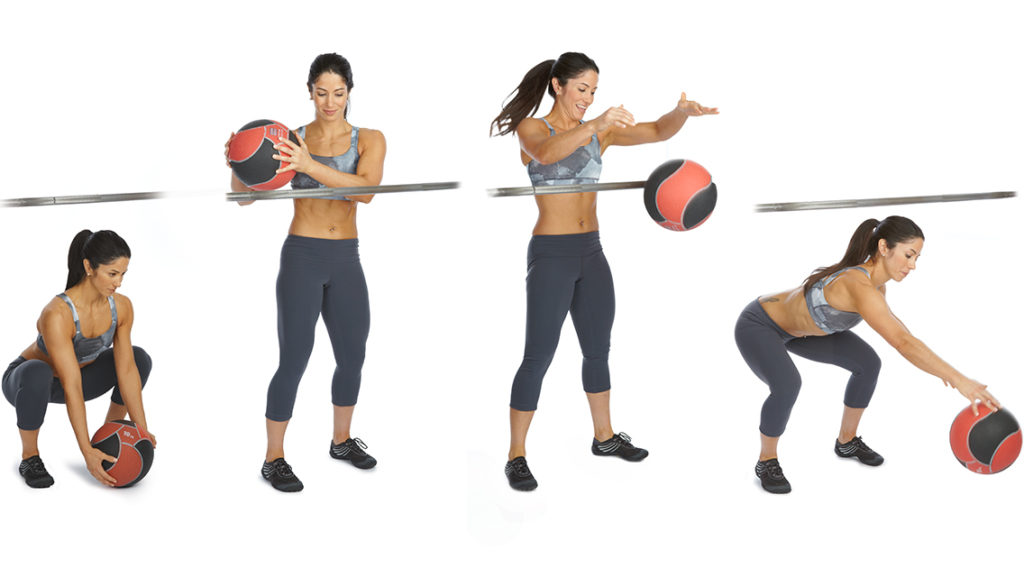
- Place a heavy medicine ball on the floor in front of a squat rack or Smith machine with the bar at chest height.
- Straddle the ball.
- Keeping your lower back in its natural arch, squat down and pick up the ball.
- In one smooth motion, stand and lift the ball to chest height (you may have to shift the ball to one side to avoid bumping the bar).
- Lift the ball over the bar and drop it on the opposite side.
- Squat down, retrieve the ball and repeat the movement as quickly as possible, taking care not to hit your head on the bar.
Tips: Because most medicine balls are relatively light, you don’t have to be too concerned with picture-perfect form when you squat down to get the ball — just bend over, grab it and lift it over the bar.
In competition, strongmen perform this exercise using Atlas stones — massive rocks sometimes weighing hundreds of pounds each. For them, it’s a brutal test of raw strength. For you, it’s a fun and unusual (but intense!) ramp-up to the tougher moves to come.
Sets and Reps: As many reps as possible in one minute. Rest 90 seconds and repeat one or two more times for a total of two or three sets.
Make It Easier: Space out your reps.
Make It Harder: Pick up your pace.
2. Barbell Bent-Over Row
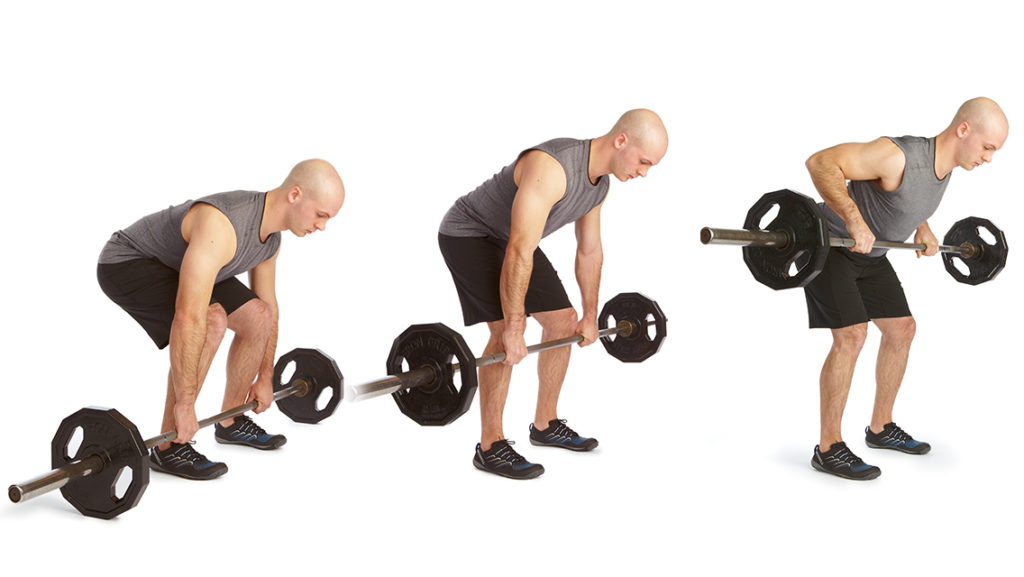 Standing behind a loaded barbell, hinge forward from the hips approximately 45 degrees and bend your knees until you can reach the bar.
Standing behind a loaded barbell, hinge forward from the hips approximately 45 degrees and bend your knees until you can reach the bar.
- Keeping your lower back in its natural arch, hands slightly wider than shoulder width, take an overhand grip on the bar.
- Shift your weight onto your heels and lift the barbell to just below your knees (this is your starting position).
- Keeping your legs solidly underneath you and your torso angled, pull your shoulder blades back and bend your arms, pulling the bar up until it contacts your lower abdomen.
- Reverse the movement, straightening your arms and lowering the bar back to the starting position.
Tips: “Many strongman events require you to pull something heavy toward you — a stone, a truck, a rope attached to something heavy,” says Pulcinella. For people seeking functional fitness, the bent-over row helps keep the muscles in the midback healthy — a major key to improved posture
Sets and Reps: Two or three sets of eight to 12, resting one minute between sets.
Make It Easier: Use a lighter implement than a standard 45-pound barbell.
Make It Harder:Add more weight!
3. Unilateral Farmer’s Carry
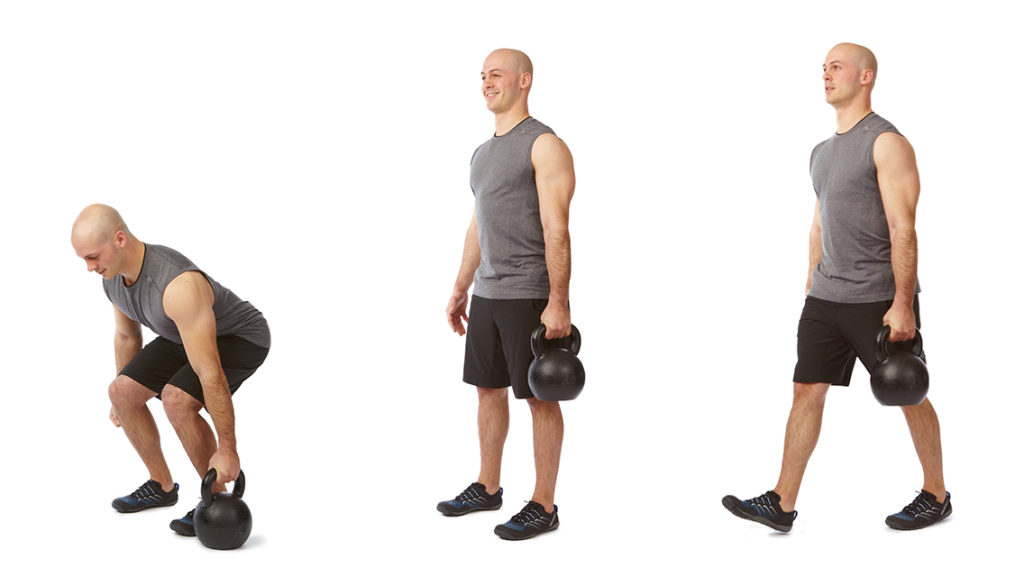
- Stand just to the left of a kettlebell parked on the floor.
- Push your butt backward and bend your knees until you can grasp the handle with your right hand.
- Rise to a standing position with perfectly upright posture — back straight, head aligned with your spine, shoulders back.
- Walk forward in a straight line without bending or shifting to either side.
Tips: If your workout area is small, walk in a square, a figure-eight pattern, or along an out-and-back path. For an added balance-and-control challenge, you can try this movement with a barbell, grasping the center of the bar with one hand.
Sets and Reps: Do one or two sets, one to two minutes each, switching hands at the halfway mark and resting 60 seconds between attempts.
Make It Easier: Try the Two-Handed Farmer’s Carry: Perform the movement as described above, this time carrying a kettlebell in each hand. Since the load is now balanced between your two hands, it will be easier to keep your torso upright.
Make It Harder: Try the Unilateral Overhead Farmer’s Carry: Do the movement carrying a heavy dumbbell in one hand with your arm locked overhead. You can also experiment with holding a dumbbell in each hand when you do this exercise: one by your side and the other held aloft.
4. The No-Sled Sled Push
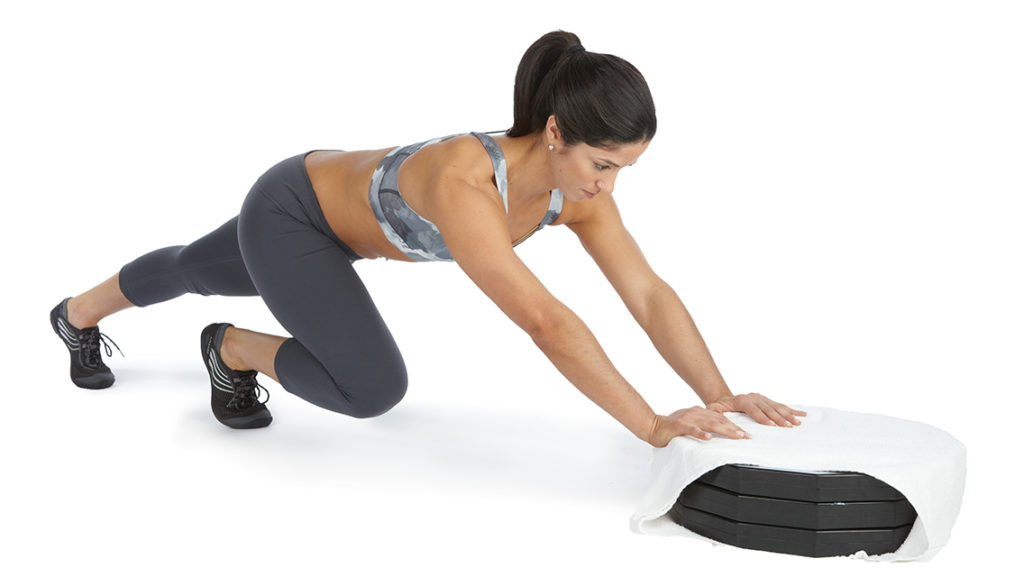
- Place a thick towel or foldable exercise mat on the floor at one end of an aerobics room, basketball court, or other large room with a smooth, wooden floor.
- Place one or more barbell plates in the center of the towel or mat and fold it over the top of the stack of plates.
- Stand behind the weight stack, facing the center of the room.
- Bend forward and place your hands on the edge of the top plate that’s closest to you, gripping the towel very firmly so the weights won’t budge.
- Lean your weight into the stack.
- Lock your arms, straighten your back and drive explosively forward with your legs, one at a time, pushing the weight stack across the floor using long, smooth steps.
Tips: The weighted sled, a specialized device used for intense pushing and pulling workouts, is a mainstay in strongman training. “In 10 minutes,” says Pulcinella, “a weighted sled allows you to do what would normally take a half-hour on a treadmill — and it builds explosive strength at the same time.”
This gym-friendly version is an excellent alternative when you can’t risk scratching a floor. Another variation (if you don’t mind getting chummy) is to have a training partner sit cross-legged on a towel, grab him by the shoulders or knees, and push or pull him around the room.
Sets and Reps: Push the “sled” for 20 to 30 seconds. Rest for 30 to 60 seconds and repeat. Work up to a total of four to six pushes.
Make It Easier: Use less weight and slow down.
Make It Harder: Add weight, reduce your rest period, or simply try to drive the “sled” faster.
See all the moves in action at The Old-Time Strongperson Workout (Video).
This article originally appeared as “The Old-Time Strongperson Workout ” in the May 2012 issue of Experience Life.
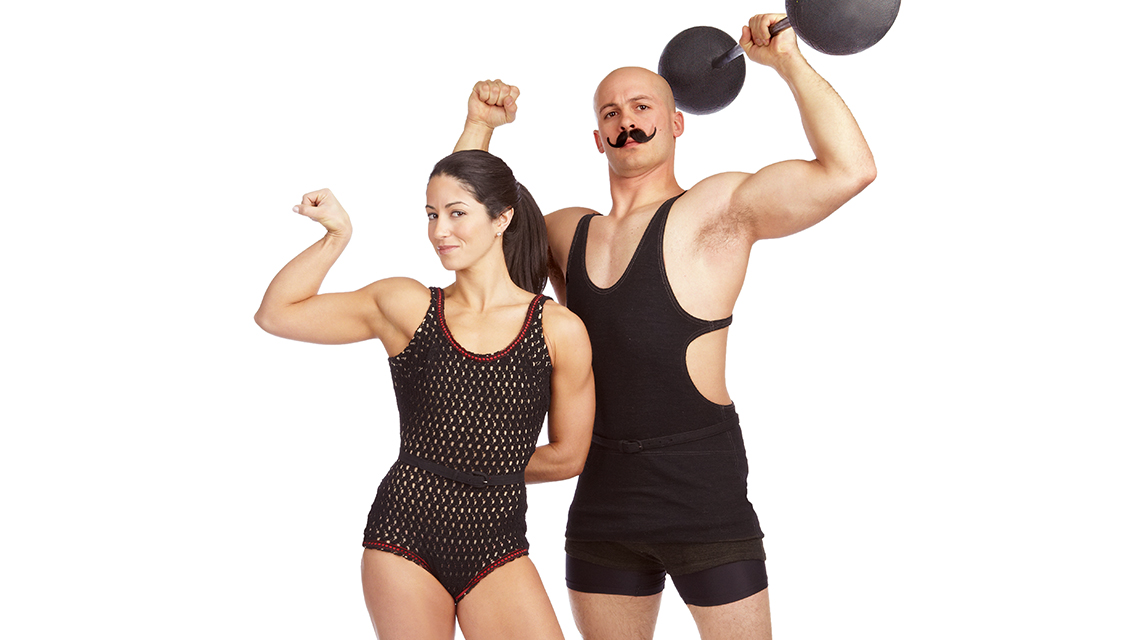
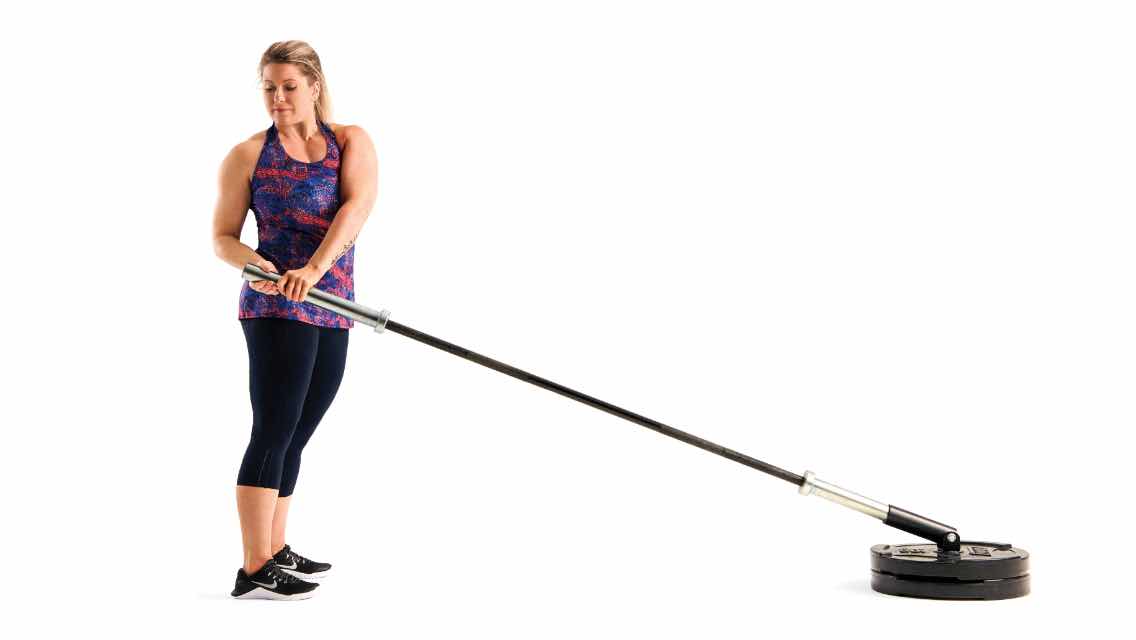
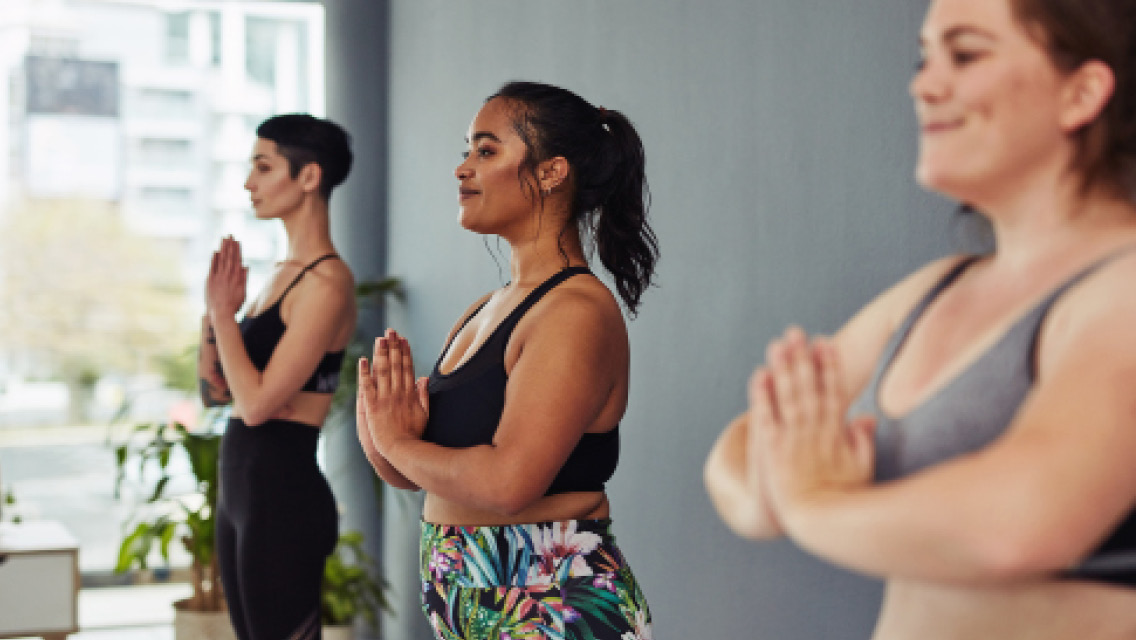

This Post Has 0 Comments